Tools to help facilitate decision making around Dams
There are a range of reasons why there may be a need to make a decision about the future of a dam. It may have received a letter of deficiency and be in need of repair. Members of the community may be wanting to restore fish passage to the river. Or maybe there are concerns about water quality as a result of the dam. Depending on the dam, the community and the decision, every process will look different. Many decisions around dams can take a long time and require patience. While there maybe a desire to move fast to make a decision, it is important that the decision is not rushed to ensure that everyone has a chance to participate.
On this page, we share methods and tools to support the decision making process around dams with the goal of improving the ability of communities to work together to find creative solutions to addressing the competing demands of rivers and dams. The approach outlined below brings together design charrettes and Structured Decision Making. We encourage others to use, test and adapt these methods and to share their own methods and experiences.
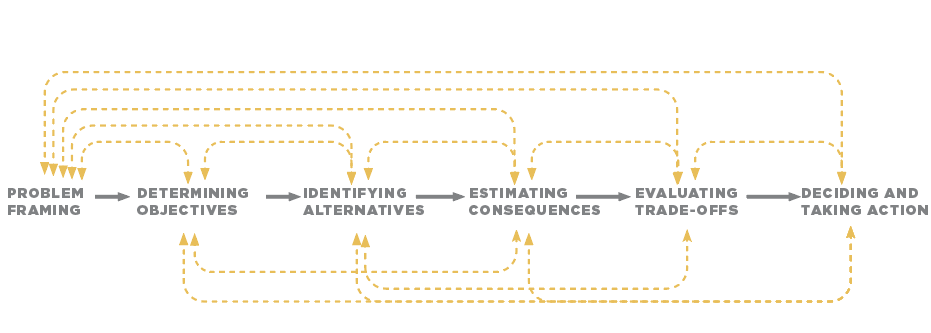
Overview of Method
The hybrid approach outlined on this webpage brings together design charrettes and Structured Decision Making to support decision making around the future of a dam.
Overview of Methods (PDF) Problem Framing (PDF)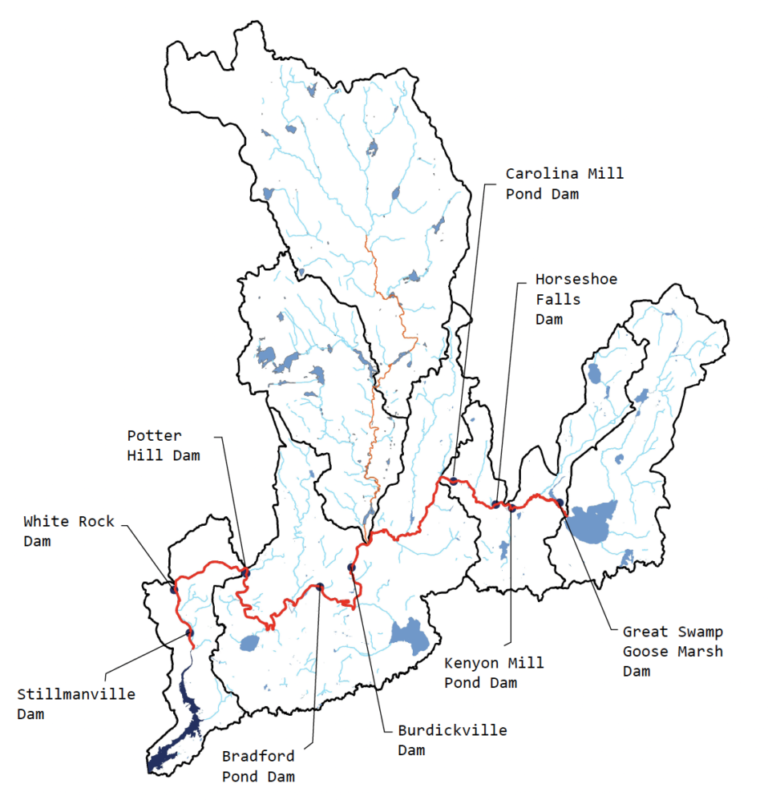
Project Framing
One of the first steps in any decision making process is to determine how to frame or structure the problem, the decision context, and the scope of the work.

Determining Objectives
Project objectives represent the social, ecological, and economic attributes that are important to the public and decision makers. The objectives will be used to evaluate and understand the consequences of the alternatives.
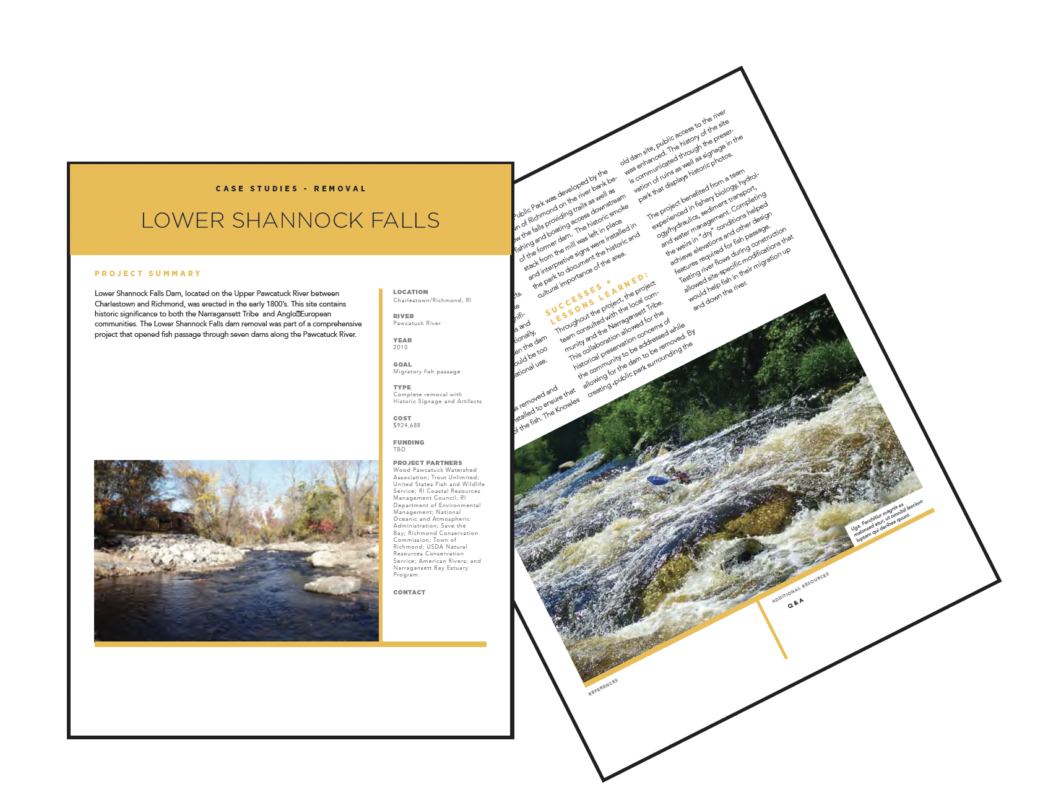
Identifying Alternatives
Given that most dams within the Narragansett Bay Watershed are small, there are often a range of alternatives that can achieve multiple objectives.
Identifying Alternatives (PDF) Evaluating Tradeoffs (PDF)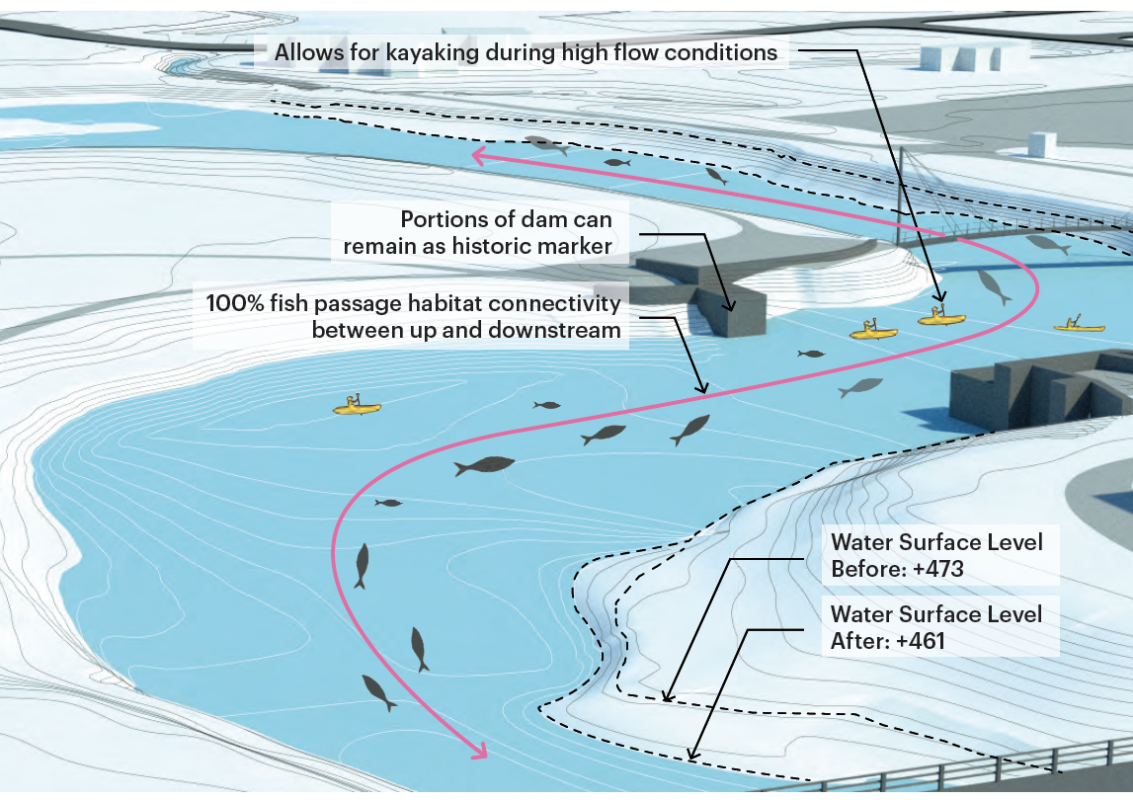
Estimating Consequences
Once the objectives and alternatives have been identified and agreed upon, the next step is to estimate the consequences of the alternatives with respect to the objectives.
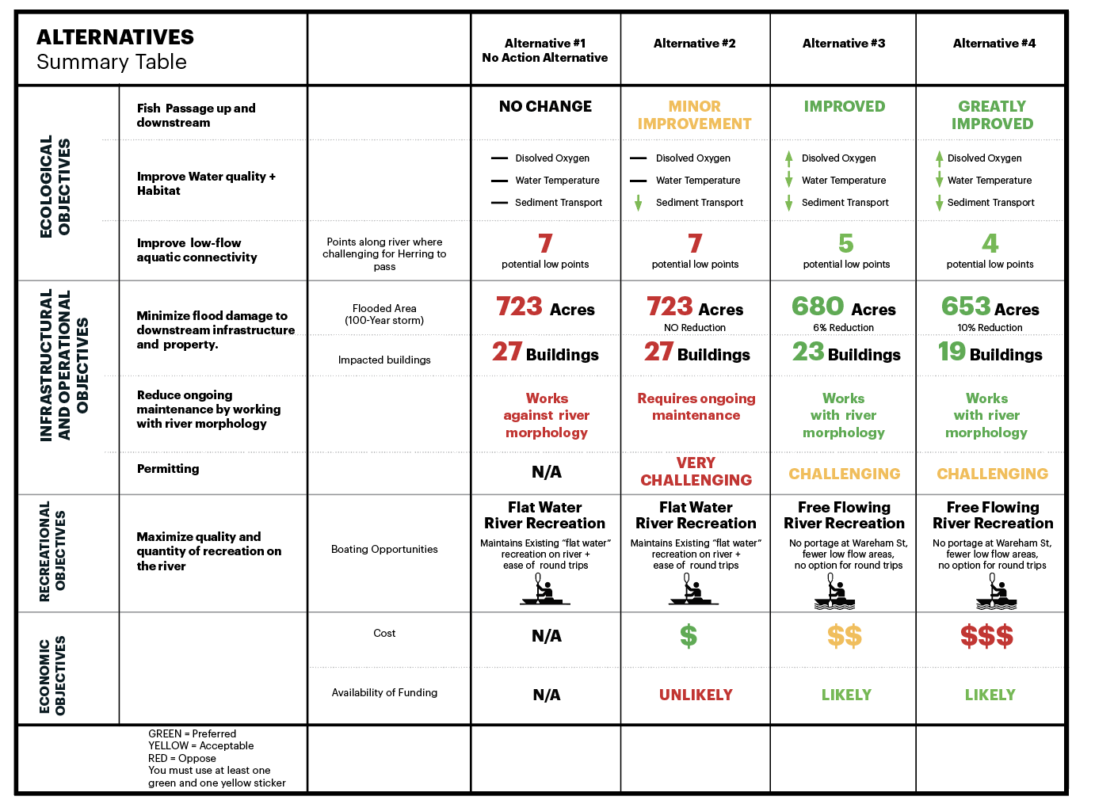
Evaluating Trade-Offs
The Decision Matrix provides a visible way to evaluate how well each alternative meets the project objectives.
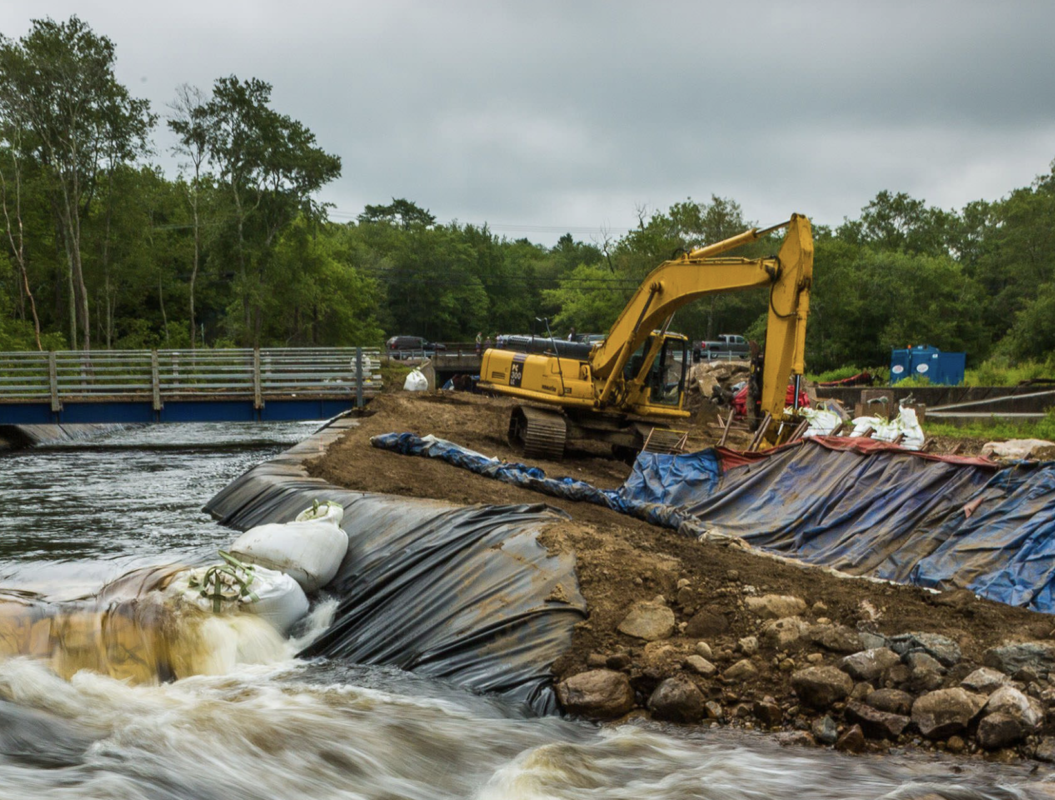
Deciding and Taking Action
The ultimate goal of this process is to be able to decide and take action to address aging dam infrastructure in the region. An open and transparent decision making process is the foundation that will then allow for a project to move into the next stages of design, permitting and implementation.